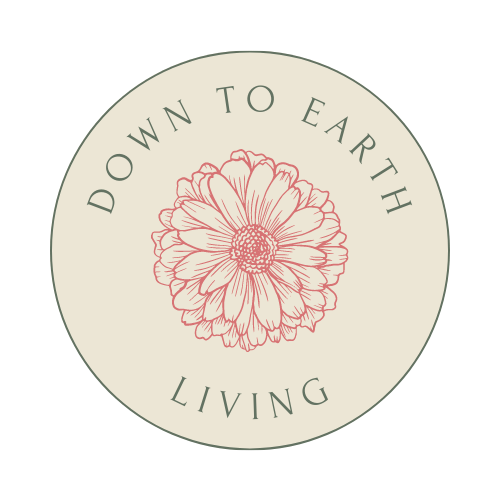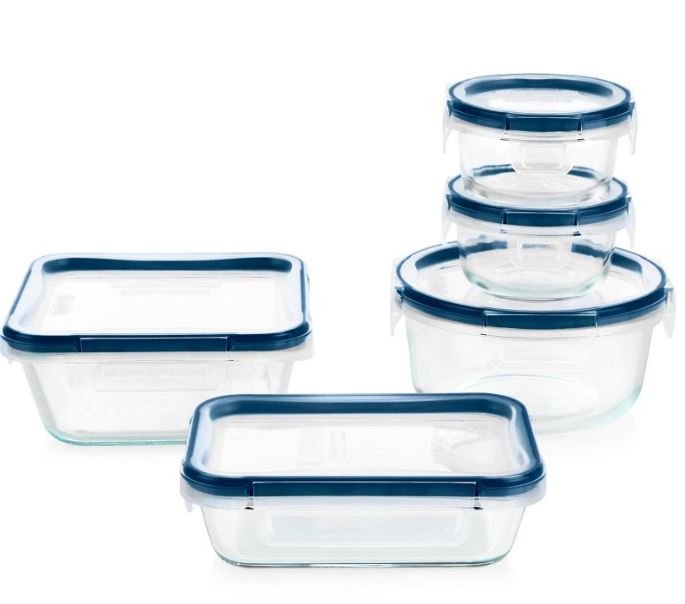Top 10 Zero Waste Swaps
Disclosure: This post contains affiliate links where I receive a small commission if you purchase select products linked below at no extra cost to you. I affiliate with brands who I use and trust and are aligned with my sustainability mission.
First, I wanted to let you know you are reading my first blog post ever, how exciting!! I have much to share in this Down to Earth Living blog so it’s hard to keep it to one topic per month, but it will be an adventure of writing for me.
Now, let’s get to business…or should I say learning? Zero waste living has been a growing movement in the past two decades, but the word zero can scare people off from pursuing the lifestyle. You may have seen pictures of people with a mason jar of trash from the past year, and think, “No way can I do that!!”, but I’m here to show you how. I’m on the zero-waste living journey, and I KNOW you can be too!
Simply put, zero waste living is transitioning to a lifestyle where you minimize the waste you produce with the goal of getting almost to zero. We know realistically having no waste is impossible, but it’s in the journey that you will find minimizing your waste benefits more than just the environment. As Bea Johnson, the Mother of the Zero Waste Lifestyle, said,
“Reducing also results in a simplified lifestyle that allows you to focus on quality versus quantity and experiences versus stuff”.
Bea Johnson has also created five principles of zero waste living which are helpful to start the process of sustainable change in your household.
5 R’s of Zero Waste Living
Refuse what you don’t need.
Reduce what you do buy.
Reuse whatever you can.
Recycle what you can’t refuse or reduce.
Rot what you have left if possible.
Now let’s ‘zero in’ on zero waste swaps! I have chosen products that I use daily, because these have the most impact in reducing your waste over a long period of time. It’s tempting to throw away your current disposable products, but don’t give in and use them up before you swap.
Drum roll please…..here are my Top 10 Zero Waste Swaps!!
Tiffins
My tiffin is one of my favorite things, because it’s functional, affordable, and durable. The tiffin itself originated in India for a lunch box. I also use mine for packing my lunch but even more for leftovers at restaurants and public events where I know there will be single-use plates. What’s super cool is at the end of the tiffin’s long life, you can put it to rest by recycling it as it’s 100% stainless steel!
My tiffin has also started a lot of fun conversations as people are curious why I’m eating out of a metal tin. I’ve been asked if it’s my dog tin, camping tin, and even an urn by a waitress once at a restaurant. 😊 The one downside of a tiffin is you can’t put it in the microwave as it’s metal, so keep that in mind. You can find many comparable brands of tiffins on Amazon or find them in your local zero waste store. I have a two-tier tiffin but mainly use just one level, and I have a cute, tiny tin for snacks which is super useful!
2. Beeswax wraps
This swap is the bee's knees! 😊 I use beeswax wraps primarily as a replacement for plastic wrap and Ziploc bags. The breathable fabric seals with the heat of your hands to whatever you want to cover or wrap including bowls, produce, cheese, bread, snacks, and sandwiches! What I love is they’re made from 4 natural ingredients (beeswax, pine resin, jojoba oil, and 100% cotton fabric) and can be easily made at home! After a lot of trial and error with creating my DIY Beeswax Wrap workshop, I came across Jenny Joy Soap’s pre-mixed beeswax bars which made it SO simple to make DIY wraps. You simply melt the bar on a pan in your oven, spread it across your fabric, and wha-lah you made a wrap! Plus, Jenny makes the bar using beeswax from her bees and pine resin from her trees on her homestead in Arizona.
Beeswax wraps last a year with regular use, and then you can refresh them with another pre-mixed beeswax bar to be good for another year. They can be cleaned with cold water and mild soap if they get dirty, and you can compost the wraps when they get to the end of their life! For more detailed directions on how to make your own beeswax wrap, check out Jenny’s blog post or come to one of my workshops!
3. Bamboo Toothbrush
Dentists recommend to replace your toothbrush every 3-4 months (source). If we even replaced our toothbrush every six months (let’s be real, we all try to stretch that limit as far as possible 😊), that ends up being 100 toothbrushes in 50 years sitting in the landfill for generations to come. I switched to a bamboo toothbrush for this reason as the bamboo handle can be composted. Unfortunately, the bristles are usually made out of nylon which is a synthetic polymer, but in comparison to the whole toothbrush being plastic, it’s a small amount. There are many comparable brands on the market, but I use the Adult Soft Humble Brush from Sweden as it was designed by dentists. You can also learn how to dispose of your Humble Brush here!
4. Reusable Silverware
Another one of my favorite swaps is reusable silverware which you can stick in your purse or bag for various events when disposable plastic silverware pops up. If you want to save money, you could simply pack away a set of your own silverware, but I found there are more space-efficient and fun designs for reusable silverware.
*Side Note: I’m a proponent of spending a bit of extra money on a sustainable product that is functional and cute, because you want to be proud when you use your products or otherwise you’ll find yourself rarely using them.
Bamboo is a common material used for silverware, but I found the feel in my mouth is unpleasant. My set is actually a plastic one that I got many years ago for free at a career fair (love that free stuff), so I haven’t bought a new set yet. I would recommend this set from Me Mother Earth as it looks space-efficient, functional, and has good reviews.
5. Dental Floss
Back to your teeth! 😊 According to Dental E-Hub, the average person uses 18 yards of floss a year. If you start flossing at age 10 and live to be the average age of 70, those 60 years add up to be 1,080 yards of floss or going back and forth on a football field almost 11 times! I calculated how much floss I use, and it ended up to be 40 yards a year so a grand total of 24 times down and back on a football field!
Regular floss is usually made out of nylon which is a form of plastic in addition to the plastic case it’s stored in. I swapped to silk floss from Dental Lace a few years ago and recently started using charcoal bamboo floss from Me Mother Earth as it was the floss product offered in my local zero waste store, ZW Mercantile. Both materials worked well for my teeth, but I did have to get used to slightly thicker floss as only plastic can get super skinny. 😊 I also enjoy the refillable tube you get with your first purchase which I have used for both floss materials which is nice.
6. Handkerchief
I may not be a cowboy or farmer, but I sure do enjoy my handkerchief. I tried to look up some stats to wow your socks off about handkerchiefs, but apparently researchers haven’t been able to track how much snot we blow per year or have the money to research it. 😊 It basically made common sense to me to switch away from facial tissues to a handkerchief to reduce unnecessary paper use. Handkerchiefs have worked for people’s needs for so many years, so why not now? I have enjoyed the thicker material of handkerchiefs, so I don’t feel like I’m blowing a hole through every tissue, and I just throw my handkerchief into the wash and wa-la it’s ready to go again. My mom made the handkerchiefs I use, so I haven’t had to buy any yet. If I was to buy some, I really like this handkerchief made out of organic cotton in New Mexico from an Etsy seller, oteKLOTH.
7. Glass Food Storage Containers
I switched over to glass food containers a few years ago as I wanted to reduce my plastic. I have recently become more intrigued about the conversation revolving around if plastic containers are toxic by leaching chemicals into your food in the microwave. I will go more into this topic in a later blog, but if you’re interested too, you can read this article from ScienceLine for more details. The summary is the answer is still not clear from the FDA or researchers as plastic is incredibly hard to track for short-term and long-term effects. In the meantime, researchers have recommended to avoid putting plastic in the microwave to avoid unnecessary exposure to harmful chemicals some plastics are made of including BPA, phthalates, and styrene. To me, it seems there is not enough known about plastic to ensure it’s safe for our health, so I would recommend for the sake of both reducing your plastic and staying safe from chemicals to swap your plastic food storage containers for glass ones. I bought mine from Target which still have plastic lids, but I just don’t microwave the food with the lid on. 😊
8. Metal Water Bottle
Water bottles are one of the most common sustainable switches. You are probably thinking, “Carissa, it’s obvious to use a water bottle, it’s on every sustainability commercial!” Well, you’re right, but…I want to recommend specifically a stainless-steel water bottle! I recently had to buy a new water bottle as my old one had too many dents to count and the paint was falling off at an alarming rate. It was a S’well water bottle, and it treated me ‘swell’ for six years. I was looking into other materials, but glass bottles are not able to be recycled at the end of their life because they are made to be extra durable…sad. I looked into other more sustainable metal water bottle brands, but the designs weren’t big enough or had a lid I could rely on to be durable. I surprisingly found myself back at S’well and buying it again as only the lid isn’t stainless steel, and I was able to recycle my old one, yippee!
9. Safety Razor
I don’t know about you, but the thought of using a safety razor scared me. Then my sisters gave me one for Christmas and I was too curious to not switch over. My razor has been my most recent swap as I waited two years to use up the blades of my other razor, but it’s been an easier transition than I thought! I haven’t cut myself yet, and the main differences are letting the razor do more of the work than my hand, disassembling and drying the razor blade every time I shave to prolong the blade’s sharpness, and replacing the aluminum blade more often. My first blade lasted me 1.5 months (which was during *cough cough* winter shaving season), but I’ve also heard they last 3-5 full beard shaves. The aluminum blades are cheap, and you can send your blades back to Albatross to be reused which I love too! They are many comparable brands for safety razors, but my Bareaya razor has been treating me well.
10. Menstrual Pads or Cup
Alright men, this swap is for the ladies, but please read on if you want to help the women in your life become more sustainable! One of the sources of waste that is not talked about enough is from periods. Periods happen every month for a large chunk of a woman’s life, so that waste really adds up…9,120 tampons actually (source)! That’s a lot of waste and a chunk of money you can save by using a reusable product instead. I would love to talk more about this topic more in a future blog, so I will instead give you a summary of what I’ve found. I personally have always struggled with tampons, but I decided to give the Diva Cup a try first. I struggled for three months before I realized the cup wasn’t for me, but this article gives you cup options for different cervix sizes which is a factor I didn’t consider. Then I found Party in my Pants reusable pads which are made in Wisconsin and gave them a try. They have a similar feeling to regular pads, but I did have to change my habits to wash out the blood before I laid them in a bucket to sit until I would do a load of laundry. Then they clean up nice and I have been using mine ever since! I use the overnight flannel pad for everyday use and found it handled my heavy and regular flow well. Plus, I love the cute patterns!
Well, my fellow Earth Movers is your brain full of ideas yet?? These swaps have been a part of my zero-waste journey over the last seven years, so please remember to do ONE swap at a time. It takes time for a change to become routine, so try a swap for a month, reflect, adjust, and then keep at it. In the end, your effort and action are what matters!











